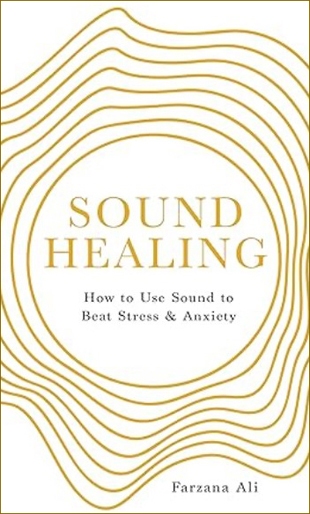This author approaches this scientific field with the heart of a religious devotee. Words like “frequency,” “harmony,” “wave,” and “pitch” are used in the context of understanding sound but also with a sensitivity to spiritual understanding. The notes in the book are all references to studies in medical journals.
Ali shows how sound provides healing for people suffering pain or the memory of pain, as well as anxiety and stress of the ordinary everyday variety. She approaches her subject from what appears to be the Sufi Muslim path, but she’s conversant with a variety of spiritual traditions. For example, Ali recommends the use of Sanskrit mantras, especially one that holds personal significance and importance for the person using it; this, she says, is a way of “creating your own affirmation.” She then takes this one step further, encouraging readers to make their affirmations present tense: “So 'I am calm' is better than 'I will be calm.' Doing this engages your reticular activating system. It will help you see the world as you wish it to be.”
That teaching comes late in the book, after Ali has introduced the idea of a “reticular activating system.” (There were many scientific terms in this book that were previously unknown to me.) Simply put, it means neurons in the brain that mediate our behavior. Sound impacts those neurons profoundly. Sound healing and brain-wave activity plays a significant role here.
But don’t worry. Ali takes the reader slowly through this process. Chapter 1 is simply, “Why Sound?” and chapter 2 is “What Is Sound Healing?” Here’s why this book may speak to you: “As a meditative tool, sound taps into a part of the process of healing, reflection, nourishment and resetting in a way that words simply can’t. It allows people who do not have or want to use their words to delve into a space of self-discovery. Sound is an immersive, full-bodied, somatic experience — a calling into our subconscious, our inner sanctum and our innate wisdom.”
Well put. And needed by many of us. Familiar practices such as mindfulness, paying attention, and breathing are found here often as well.
Lifestyles today probably place most people in need of this teaching, as Ali writes in chapter 3, “How We Heal through Sound”: “Gone are the days when lying on your sofa doomscrolling through Netflix was classed as rest. These days we know that rest is much more complex and multi-faceted.” She aims to show how sound can engage you in deep rest and allow for forms of healing to take place.
